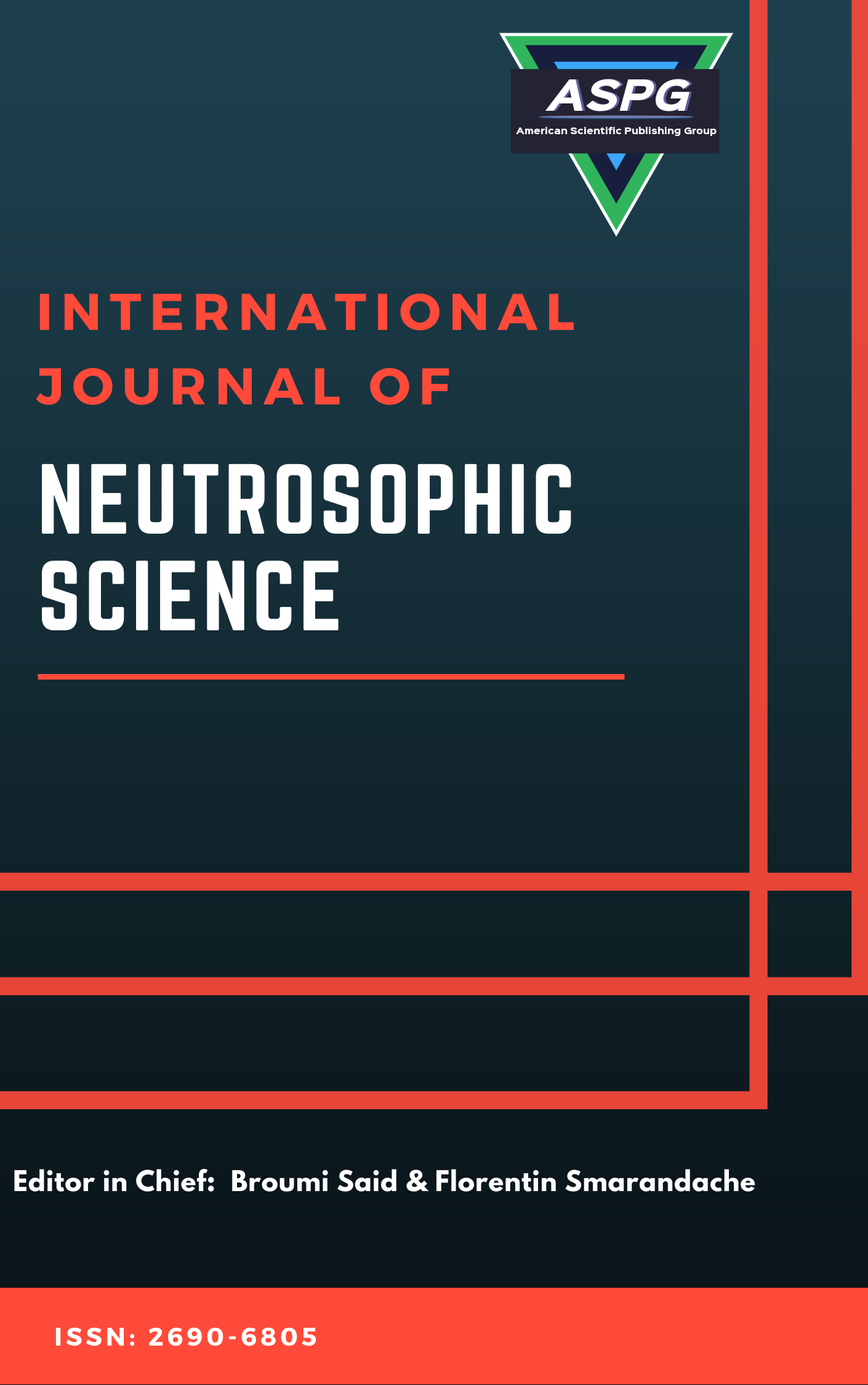

Volume 26 , Issue 2 , PP: 324-336, 2025 | Cite this article as | XML | Html | PDF | Full Length Article
Samandarboy Sulaymanov 1 *
Doi: https://doi.org/10.54216/IJNS.260225
In this work, a comparison plan of Agrobank and NBU for the financial years 2021, 2022, 2023, and 2024 is provided via neutrosophic approach in terms of indicators of profitability, liquidity, and solvency. The profits of the banks are analyzed through the application of net profit margin, profitability coefficient, absolute liquidity ratio, and solvency ratios. The economic ratios on profitability and liquidity point out that the NBU bank is performing better than the Agrobank but solvency ratios depict that Agrobank is more stabilized than NBU. This framework will avail a relative comparison of the two banks in terms of the opportunities, threats, strengths and weaknesses of each. In this way, findings can improve the understanding of banking industry’s performance in Uzbekistan and provide useful information to policuemakers and researchers. Continuation of the study could include the consideration of factors outside the firm to determine how they affect financial performance.
Financial Performance , Profitability , Liquidity , Solvency , Comparative Analysis , Neutrosophic Analysis
[1] Christopher S Armstrong, Antonio D´avila, George Foster, and John RM Hand. Biases in multi-year man- agement financial forecasts: Evidence from private venture-backed us companies. Review of Accounting Studies, 12:183–215, 2007.
[2] Charles Ashbacher. Introduction to Neutrosophic logic. Infinite Study, 2014.
[3] Danish Ather, Naina Chaudhary, Gurinder Singh, Tanveer Beig, and Rajneesh Kler. Enhancing used au- tomobile valuations: A data-cleaning and linear regression approach for predicting prices in competitive market. In 2023 4th International Conference on Computation, Automation and Knowledge Management (ICCAKM), pages 1–5. IEEE, 2023.
[4] M. Brown and N. Green. Predictive analytics in customer relationship management: Trends and chal- lenges. Journal of Marketing Analytics, 8(3):150–162, September 2021.
[5] V. Christianto and F. Smarandache. A review of seven applications of neutrosophic logic: In cultural psychology, economics theorizing, conflict resolution, philosophy of science, etc. J, 2(2):128–137, 2019.
[6] Bala G Dharan and Baruch Lev. The valuation consequence of accounting changes: A multi-year exam- ination. Journal of Accounting, Auditing & Finance, 8(4):475–494, 1993.
[7] Muyassarzoda Fayzieva, Samariddin Makhmudov, Jasur Gaipov, and Janabay Isakov. Econometric anal- ysis of the impact of digital infrastructure on investment practices in uzbekistan. In Proceedings of the 7th International Conference on Future Networks and Distributed Systems, pages 12–18, 2023.
[8] Sandeep Goel. Financial Analysis. Routledge India, 2nd edition, 2019.
[9] Diana R. Harrington. Corporate Financial Analysis. Business Publications, 2nd edition, 1986.
[10] Donald F. Kuratko and Jeffrey S. Hornsby. Financial Analysis. Routledge, 3rd edition, 2020.
[11] C. Lee, D. Kim, and E. Park. Utilizing data analytics for improving vehicle valuation models. Interna- tional Journal of Automotive Technology, 23(3):345–356, may 2021.
[12] Abdul Nasir, Naeem Jan, Abdu Gumaei, Sami Ullah Khan, and Mabrook Al-Rakhami. Evaluation of the economic relationships on the basis of statistical decision-making in complex neutrosophic environment. Complexity, 2021(1):5595474, 2021.
[13] H. Patel and I. Kumar. Blockchain technology applications in supply chain management: A systematic review. Journal of Supply Chain Management, 35(1):55–68, January 2024.
[14] Umberto Rivieccio. Neutrosophic logics: Prospects and problems. Fuzzy sets and systems, 159(14):1860–1868, 2008.
[15] Gurinder Singh, Naina Chaudhary, Danish Ather, Rajneesh Kler, and Manik Arora. Analysing tourist experiences in response to ai-based digital technologies adaption: A logistic regression analysis in case of uzbekistan. 2024.
[16] Florentin Smarandache. A Unifying Field in Logics, Neutrosophy: Neutrosophic Probability, Set and Logic. American Research Press, 1999.
[17] Florentin Smarandache. Neutrosophic logic-a generalization of the intuitionistic fuzzy logic. Multispace & multistructure. Neutrosophic transdisciplinarity (100 collected papers of science), 4:396, 2010.
[18] A. Smith and B. Johnson. A comprehensive review of machine learning applications in smart education. Journal of Educational Technology, 45(2):112–120, 2022.
[19] K. R. Subramanyam and Robert F. Halsey. Financial Statement Analysis. McGraw-Hill Irwin, 8th edition, 2003.
[20] Neelam Thakur and J. S. Bhatnagar. Financial analysis of hdfc bank. Scientific Journal of India, 2(2):53– 54, 2017.
[21] Aziza Usmanova, Ahmed Aziz, Dilshodjon Rakhmonov, and Walid Osamy. Utilities of artificial intelli- gence in poverty prediction: a review. Sustainability, 14(21):14238, 2022.
[22] J. Wang, K. Li, and L. Zhao. Evaluating cloud computing services: A multi-criteria decision-making approach. Journal of Cloud Computing: Advances, Systems and Applications, 12(2):95–108, February 2023.
[23] Xinhao Wang and Rainer vom Hofe. Financial analysis. Selected Methods of Planning Analysis, pages 173–223, 2020.
[24] L. A. Zadeh. Fuzzy sets. Information and Control, 8(3):338–353, 1965.
[25] Jos´e L. Zafra-G´omez. Financial analysis. Global Encyclopedia of Public Administration, Public Policy, and Governance, pages 2176–2183, 2018.
[26] F. Zhang and G. Chen. Modeling the spread of infectious diseases using advanced computational tech- niques. Journal of Computational Biology, 28(4):789–802, July 2023.